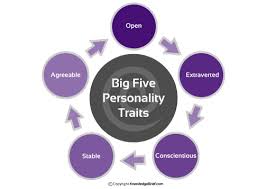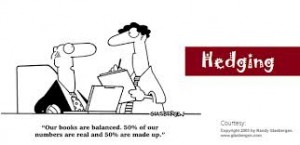The concept of Big Five personality model is taken from Psychology and includes five domains that describe personality. This model is the most stable model and it represented a significant advance in personality theory. Personality traits are always plays an important role in management as it drives employee behavior.
Big five model derives from analysis of data which contain number of interesting findings about personality and have allowed researchers to identify some major patterns in humans personalities. And matter of the fact is that generalization of big five model doesn’t (mandatorily) apply to all humans even though the average of people have that patterns. Basically this model is assumed to represent the basic structure behind all personality traits.
Now, the following are big five factors:
- Extraversion: The extraversion dimension captures our comfort level with relationships. Extraverts tend to be gregarious, assertive, and sociable. Introverts tend to be reserved, timid, and quiet.
- Agreeableness: This dimension refers to an individual’s propensity to defer to others. Highly agreeable people are cooperative, warm, and trusting. People who score low on agreeableness are cold, disagreeable, and antagonist.
- Conscientiousness: This dimension is a measure of reliability. A highly conscientious person is responsible, organized, dependable, and persistent. Those who score low on this dimension are easily distracted, disorganized, and unreliable.
- Emotional stability: This dimension – often labeled by its converse, neuroticism – taps a person’s ability to withstand stress. People with positive emotional stability tend to be calm, self-confident, and secure. Those with high negative scores tend to be nervous, anxious, depressed, and insecure.
- Openness to experience: This dimension addresses range of interests and fascination with novelty. Extremely open people are creative, curious, and artistically sensitive. Those at the other end of the category are conventional and find comfort in the familiar.
Employees are sometime tested on the big five personality traits in collaborative situations to determine what strong personality traits they can add to the group dynamic. Knowing about personality traits of employees is as important as knowing about operations and processes because through that mode employer able to know well about employees ability for performing organizational activities.
Click here for government certification in Human Resources





18 Comments. Leave new
Interesting article.well written
Good work! Well written!
Nicely written!!
Thoroughly explained
quite unique and interesting article !!
This is very insightful, good for reading people in general.
unique
very informative.
Informative and excellent work..!
a very good incite. well written article
good job.
Very interesting and informative. Nice article.
Interestingly explained!
That calls for a detailed study of the subject. writing about Personality is a really a tough job. Keep it up.
nice!
One of my favourite theories in psychology given by Costa and Mccrae. Well explained and nicely detailed
well explained with good points
The points have been very well articulated
the five factors are explained very well !
very well structured !